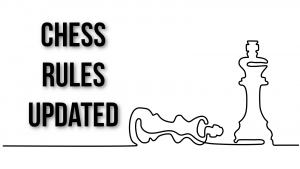
Shen, Shetty Lead after 2 at U.S. Junior Closed
Pairings for Round 2 of the 2013 U.S. Junior Closed Championship looked more like those from a Swiss system than the actual round robin in place. After a completely decisive first round on Friday at the Chess Club and Scholastic Center of Saint Louis, four out of five games on Saturday featured identical-score matchups, ensuring some early separation in the rankings.
By Brian Jerauld
Both FM Atuyla Shetty, who had the lone matchup without a like-scored opponent, and IM Victor Shen, a third-place finisher in the last two U.S. Juniors Closed events, were able to keep a perfect pace through the first two rounds. IM Daniel Naroditsky and FM Luke Harmon-Vellotti, both of whom earned wins in the first round, agreed to an opposite-colored bishop draw after 36 moves. Robert Perez and Samuel Sevian also drew, both earning their first half-point of the tournament. IM Kayden Troff also earned his first point of the tournament.
Shen wasn’t sure if he had just dodged a bullet in his game versus FM Yian Liou until he saw the text message from his father shortly after the game’s conclusion: You’re lucky.
“My dad doesn’t even play chess – but he does have a computer next to him, so I assume I was losing somewhere,” Chen said. “I had a feeling I was, so hearing that was not a giant surprise, but I just didn’t ever see it. And neither did [Liou].”
Indeed Liou, who had accurately squeezed Sevian into submission in the first round, came out with an equally clean King’s Indian Attack that seemed to foreshadow steady advancement into Shen’s camp. Tossing fuel on the fire was Shen’s offering of 19. … Qc8, a wasted move that was corrected immediately with 20. … Qc7, but at the loss of a crucial tempo. It was here Shen guessed he had earned the text from his father.
“I had been happy with the result of the opening, but after that [Qc8] mistake, I thought [Liou] was better,” Shen said. “After that, I just kept feeling that something dangerous was about to happen on the kingside.”
To the contrary, Grandmaster and commentator Yasser Seirawan thought Liou’s attack on the kingside, specifically 17. g5 might have come prematurely. The result of the move left Liou’s pieces rather awkward and did more to expose his own king than provide any intended attack on Shen’s.
Liou’s initiative crumbled quickly. His 28. f3 put a serious cramp in his army’s mobility, which soon led to a queen trade and Shen’s battery of rooks to control the f-file. Though Shen had played the final ten moves with just under 3 minutes on his clock, Liou’s blunder at 38. Bd5 was all that was needed to notch a second win.
Shetty chalked his victory over FM Jeffrey Xiong up to preparation. And then he chalked it up to preparation again.
As if researching Xiong’s past play against the French defense wasn’t thorough enough, Shetty also ported in a plan from an alternative line he had also studied, which became the catalyst to Xiong’s first backpedalling in the game.
“I figured he was expecting the Sicilian, so instead I went with the French,” Shetty said. “I saw a lot of his games with the French and he always went with the same line, so I knew what to expect. And then Ne4 was an idea I took from a different variation – so even a second line helped me in this game.”
Xiong’s opening looked decent enough, albeit a bit passive for white, until Shetty’s 14. … Ne4 forced his first retreat. From there, Xiong’s attack lagged behind and looked rather indecisive, while Shetty pressed forward with free initiative.
By 17. … f5, Shetty had complete center dominance, displaying a position that looked more like a Sicilian gone wrong for the white pieces than the French defense in which the game began. Move 23. Bf1 put Xiong’s bishop into permanent defense of his king for the rest of the game, and his subsequent queen trade for Shetty’s rook and bishop made the position even more of a struggle. Xiong’s last attempt, a race to pass his a-pawn to its queening square, came up just short.
Both Naroditsky and Harmon-Vellotti had the opportunity to stay perfect through two rounds, though the two ultimately played a game that settled simply to a draw. The Classical Nimzo-Indian line went straightforward enough to bring both sides into a balanced middlegame, though an isolated queen’s pawn for Harmon-Vellotti might have slightly tipped the scales.
It was an opportunity Naroditsky did not pursue, admittedly with concern over his opponent’s bishop pair. He took the first opportunity to trade a knight for the white bishop, and less than ten moves later, all the upper pieces had been traded off save the opposite-colored bishops.
“A draw with the black pieces is not the worst thing in the world and, at some point, it’s important to make a prudent decision,” Naroditsky said of his choice to push forward into a draw. “You don’t always have to go all-in. Sometimes the decision is not justified, sometimes it is. We’ll just see how it goes for the rest of the tournament.”
The other draw of Round 2, between Perez and Sevian, came from the Botvinnik variation of the Semi-Slav defense in the Queen’s Gambit and featured a literal race into theory for over 20 moves. In fact, it took only 20 total minutes to get 20 moves deep into the game, and Sevian was missing just four minutes from his clock after 23 moves.
But though Perez, who had just studied the line the night prior, was “booked up” past move 26 of this extremely sharp line, it was there that he suffered the game’s first slip.
“I really did just look at this line last night, and I guess my memory failed because I played b3 rather quickly,” Perez said. “It was one of those things I realized 30 seconds later: ‘Oh, I was supposed to play Rd1 first to stop Bd6.’ It was psycho annoying.”
Perez’ momentary stray from book was met with Sevian’s first think of the game, and eventually the correct 26. … Bd6. The response sent Perez into a massively deep think, including several walks around the Saint Louis Chess Club tournament hall to recollect his thoughts. When he returned, he accurately guided the game to a draw by repetition just five moves later, as neither player could find much to do.
“When I played b3, I thought I was losing – but maybe I was just being pessimistic,” he said. “I think a draw was a fair result considering what happened.”
Kayden Troff experienced a tough loss in the first round, but bounced back convincingly in his second-round game versus WFM Sarah Chiang. After early action saw Chiang with pawns stacked and isolated on the c-file, she allowed one as a sacrifice on the 12th move with the intentions of gaining a positional advantage to the open board.
Chiang seemed to have received adequate compensation by move 19, where she had coordinated pressure on Troff’s e-pawn and all-but trapped his queen away from the action. But some indecisiveness in her method of attack allowed Troff to wiggle his queen free, and by move 26 his strongest piece was back into the open board and making noise. Chiang’s trade of the minor pieces on the next move awarded Troff a passed pawn, which would ultimately spell doom for the black pieces.
“I thought her (14th move) e5 was actually inaccurate, and I felt I had the better position from there,” Troff said. “I just felt she lost some chances she could have gotten; I still knew five moves deeper that I had prepped.”
U.S. Junior Championship 2013 | Round 2 standings
| Rank | Name | Score | M/F | Rating | TPR | W-We |
| 1 | IM Shen, Victor C | 2.0 | M | 2411 | 2978 | +0.60 |
| 2 | FM Shetty, Atulya | 2.0 | M | 2320 | 3100 | +1.12 |
| 3 | IM Naroditsky, Daniel | 1.5 | M | 2494 | 2548 | +0.12 |
| 4 | FM Harmon-Vellotti, Luke | 1.5 | M | 2340 | 2662 | +0.85 |
| 5 | IM Troff, Kayden W | 1.0 | M | 2443 | 2221 | -0.52 |
| 6 | FM Liou, Yian | 1.0 | M | 2385 | 2401 | +0.05 |
| 7 | FM Sevian, Samuel | 0.5 | M | 2390 | 2179 | -0.55 |
| 8 | Perez, Robert M | 0.5 | M | 2359 | 2162 | -0.51 |
| 9 | FM Xiong, Jeffrey | 0.0 | M | 2370 | 1672 | -0.90 |
| 10 | WFM Chiang, Sarah | 0.0 | F | 2101 | 1692 | -0.26 |

